Lone Star Tick
(Amblyomma americanum)

The Lone star tick is a commonly tick found in forested areas ranging from the midwest to the east coast of the United States.
Until recently, the Lone star tick was much more common in the southern United States, but they have progressively been spreading northward. They currently inhabit the entire eastern United States from Texas to Iowa and over to the coast. Lone star ticks can be found as far north as Maine, but are still more common in southern areas.
Visually, Lone star ticks are easy to recognize because of a conspicuous white dot on the dorsal shield of the females, which gives this tick its name. Adults are reddish-brown in color, very round, and have prominent festoons.
The Tick Research Lab of Pennsylvania is able to detect the most common tick-borne diseases in any of these species. Our tick DNA tests are over 99.9% accurate.
Details
Lone Star Tick Habitat
Until recently, the Lone star tick was more commonly found in the southern United States however, they have spread into northern regions of the country. They are currently found covering the entire eastern coast all the way to Texas and Iowa. Lone star ticks can be found as far north as Maine, but are still more common in southern areas.
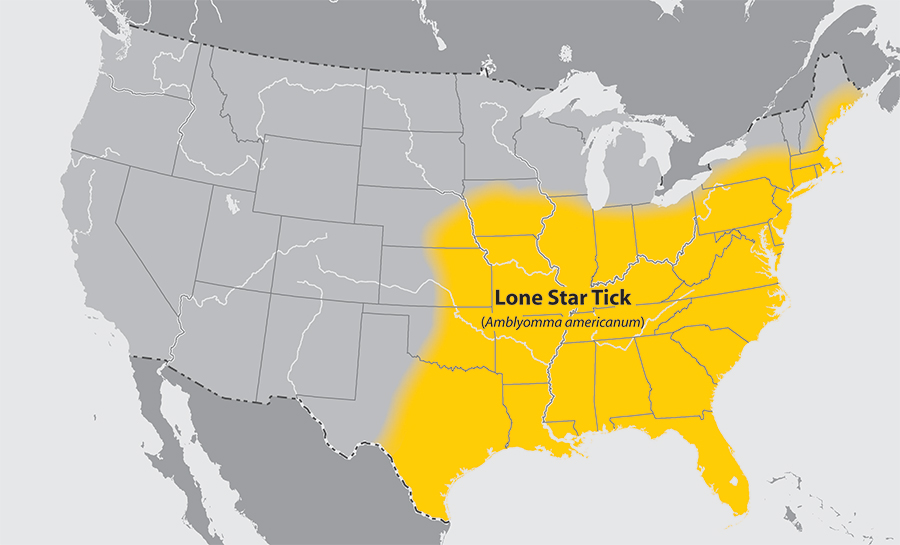
Lone Star Tick Life Cycle
A Lone-star tick’s life cycle is like many of the other well-known ticks, having a total of 3 stages to complete in a lifetime. Lone-star ticks enjoy attaching themselves to large wild animals and birds as their hosts and they favor wooded areas.
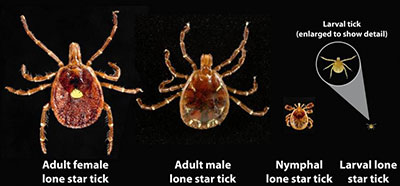
Lone Star Ticks Carry Dangerous Diseases
Two of the most common diseases transmitted by lone star ticks are Human Monocytic Erhlichiosis and Tularemia. Although the Lone star tick carries the bacteria that causes Lyme disease, research has shown that it is unable to transmit this disease to a host.
The bite of a Lone star tick has been linked to the transmissions of Southern Tick Associated Rash Illness or STARI. The cause of STARI have not been officially determined although it is possible Borrelia lonestari, a genetic relative to Borrelia burgdorferi, is responsible.
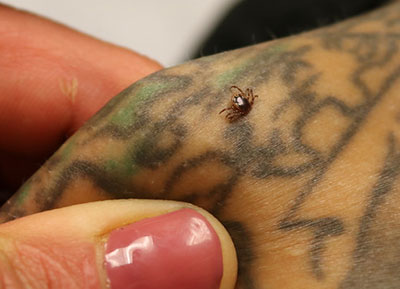
Lone Star Tick Behavior
Lone star ticks are known to be more aggressive than other species of tick. They will actively seek a host by sensing vibrations and carbon dioxide.
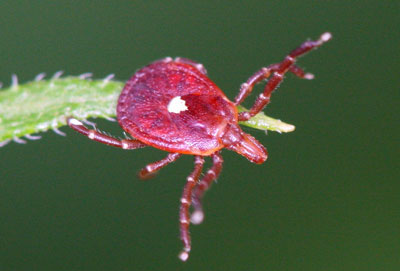
Lone Star Tick Identification
Visually, Lone star ticks are easily identifiable due to the trademark white dot found on the dorsal shield of the adult females. Both adult males and females are reddish brown in color, round, and have prominent festoons.
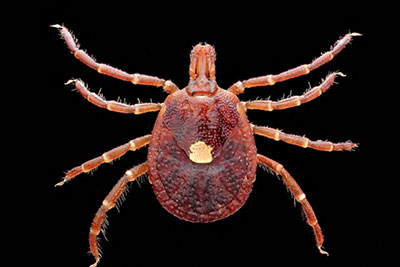
Red Meat Allergy
Scientists have recently confirmed multiple cases in which bites from a Lone star tick appear to cause an allergic reaction to red meat, known as Alpha-Gal syndrome. The allergy comes from the saliva of the tick and not a specific infectious agent. Even if the tick has no infection, you are still at risk for developing an allergy to red meat.
The saliva of a Lone star tick has a carbohydrate known as Alpha-gal which is similar in structure to a carbohydrate present in red meats. When the tick saliva enters your body, there is a chance your immune system will create antibodies against the Alpha-gal carbohydrate. Because the structure of these carbohydrates are so similar, the antibodies may mistake the red meat carbohydrate for the Alpha-gal carbohydrate, causing an allergic reaction that was meant for the tick saliva.
If you are concerned you may have developed a meat allergy due to a Lone star tick bite, make sure to contact your allergist to discuss available options. Unfortunately, since all Lone star ticks have these sugar structures in their saliva we do not offer testing.

